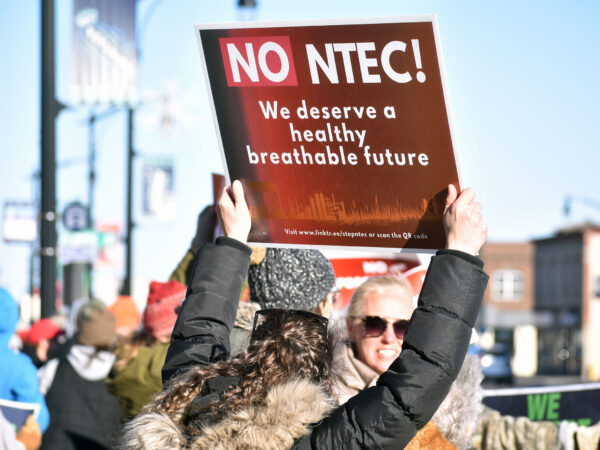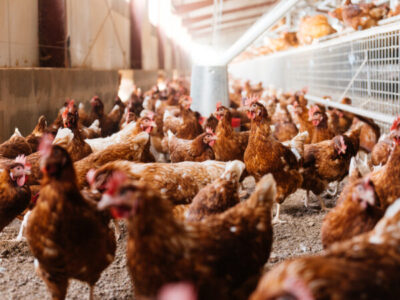
By Juanpablo Ramirez-Franco, WBEZ
This coverage is made possible through a partnership between WBEZ and Grist, a nonprofit, independent media organization dedicated to telling stories of climate solutions and a just future. Sign up for WBEZ newsletters to get local news you can trust.
The Jo-Carroll Energy Co-op in Northwest Illinois and a power cooperative serving four Midwestern states will soon benefit from an historic federal investment aimed at dramatically expanding clean energy projects in rural areas across the country.
“This is a game-changing moment for rural communities across the nation,” said Amanda Pankau, the director of energy and community resilience with the Champaign-based Prairie Rivers Network, a longtime environmental conservation nonprofit.
Jo-Carroll Energy, part of the Dairyland Power Cooperative, is getting a slice of $7.3 billion in Inflation Reduction Act funding distributed across 23 states. The U.S. Department of Agriculture calls it the largest investment in rural electrification since President Franklin Delano Roosevelt signed the Rural Electrification Act into law as part of the New Deal in 1936.
Dairyland, which serves Illinois and Iowa, Minnesota and Wisconsin, is set to receive a $471 million grant and a $102 million loan to develop four wind solar installations and four wind power installations.
Rural electric co-ops — the consumer-owned local utilities that keep the lights on in rural America — need to pick up the pace when it comes to transitioning to clean energy, according to Pankau. A recent analysis from the Rural Climate Cooperative found that approximately 60% of coal-fired electricity is generated in rural areas. To cut climate warming emission and hasten the clean energy transition, helping wean the co-ops off fossil fuels will be critical.
In Illinois, fossil fuel dependence among rural electric co-ops ranges from 53% to 89%, according to a recent scorecard report by the Prairie Rivers Network and the Citizens Utility Board. The ties between co-ops and coal aren’t just underlined by long-term contracts, but in some cases outright ownership. Several co-ops in southern Illinois have major stakes in the Lake of Egypt Coal Plant and the Prairie State Coal Plant.
Dairyland Power Cooperative generates and transmits electricity to 24 distribution cooperatives and 27 municipal utilities, including to Jo-Carroll Energy in Illinois.
“Currently, Dairyland is at about 20-25% renewables, and this will really launch us so much further down that low carbon journey,” said Katie Thomson, a spokesperson for Dairyland Power Cooperative.
For Dairyland’s 24 member co-ops and approximately 700,000 customers, the investment over the next 10 years could lower the cost of electricity by nearly 42%, according to a statement from the USDA. The total costs of the project is estimated at over $2 billion; Dairyland will also pitch in from its own resources to bring the projects online.
The larger national effort aims to cut more than 43 million tons of greenhouse gasses annually, in addition to unlocking more wind, solar, nuclear and hydro power, according to the USDA. That’s the equivalent of taking 10 million cars off the road every year. That’s not just good for the atmosphere, it will be essential to hitting the climate target that states and the federal government have set. Illinois legislators want to wean the state off fossil fuels by 2050 as part of the Clean and Equitable Jobs Act passed in 2021.
Out of Illinois’ 25 rural electric cooperatives, only Jo-Carroll Energy (JCE) will see the benefits from the new ERA announcement. The Northwest Illinois co-op serves 26,500 meters.
“With falling renewable energy prices and state and federal funding, co-ops have the tools and resources in their hands to make the shift,” said Pankau. “Our message to co-op leaders: Don’t miss out on this chance to secure a clean, affordable energy future for your member-owners.”
Juanpablo Ramirez-Franco covers climate change and the environment for WBEZ and Grist. Follow him on X at @__juanpab.
Catch more news at Great Lakes Now:
South Shore residents are fed up with garbage on their streets
Illinois and Army Corps at an impasse over building barrier to prevent invasive carp
Featured image: Crop scientists from the University of Illinois at Urbana Champaign walk along a row of a 54-acre solar farm outside of Champaign, Ill. An influx of federal money will help new finance solar power projects for the Dairyland Power Cooperative, whose service area includes Illinois. (Juanpablo Ramirez-Franco/WBEZ)




